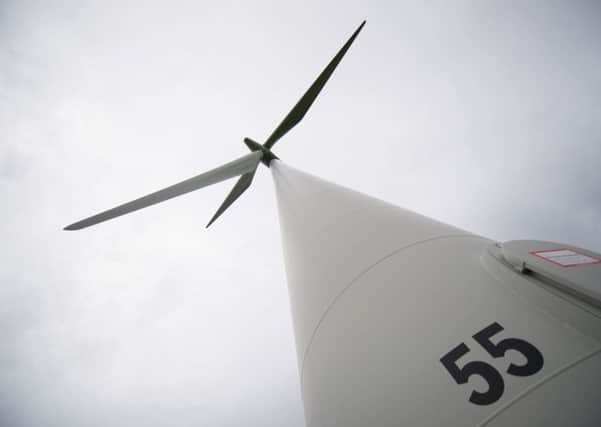Controversial Highlands wind farm plan rejected


Conservationists have welcomed the decision by energy minister Fergus Ewing to throw out the plans for a 24-turbine development near Reay in
Caithness.
He followed the recommendation of a Government Reporter who held the first public local inquiry into a renewable project opposed by a local authority since the introduction of new guidance on wild land.
Advertisement
Hide AdAdvertisement
Hide AdThe inquiry was triggered after Highland councillors objected unanimously to the development at Limekiln proposed by Dorset-based energy firm
Infinergy.
Conservation charity the John Muir Trust described the rejection as a “landmark decision”.
The development was adjacent to one of Scotland’s new Wild Land Areas, as mapped by Scottish Natural Heritage (SNH) and recognised as an asset of national importance by the Scottish Government.
The project would have led to the erection of turbines up to 456 feet high, as well as foundations, roads, tracks, transmission lines and other infrastructure in an area renowned for its unique landscape and ecosystem. It attracted 400 letters of opposition, mainly from the local
community.
Helen McDade, head of policy for the John Muir Trust, said: “As someone who grew up in Caithness, I am delighted for the local community which campaigned strongly to protect the unique character of this landscape.
“But this is also a landmark decision of national significance. The refusal explicitly states that ‘significant weight should be attached to the policies protecting wild land’.
“Coming on top of last week’s decision to reject the Bhein Mhor wind farm application near Glen Affric, it sends a clear message to developers that Scotland’s wild land is a valued national asset which merits strong protection.
“The Scottish Government now has an opportunity to dispel all remaining doubts over the future of Scotland’s wild land by swiftly rejecting the three remaining applications for large-scale wind farms on wild land, at Glencassley and Sallachy in Sutherland, and Allt Duine in the Monadhliath Mountains.”
Advertisement
Hide AdAdvertisement
Hide AdThe Flow Country covers over 400,000 hectares – 1,500 square miles. Peat there has been forming for thousands of years, and can reach five metres in depth.
Over 400 million tonnes of carbon are stored beneath the surface, protected by a fragile layer of moss that stops it escaping into the atmosphere, and contributing to climate change.
The Scottish Government recently announced £15 million worth of new funding to support restoration of Scotland’s peatlands, such as those in the Flows.
Mr Ewing, who also granted consent to PNE Wind UK Ltd to construct 19 turbines on land south of Glespin in South Lanarkshire, said: “We have been clear that wind farms can only be built in the right places, and that proposed developments are subject to strict planning laws.
“Our policy strikes a careful balance between utilising Scotland’s significant renewable energy resources whilst protecting our finest scenic landscapes and natural heritage.
“Each application is considered on its merits which is why I have refused permission for the proposed wind farm at Limekiln in line with the Reporter’s
recommendation.”
Meanwhile, the PNE Wind development is likely to benefit the local community by £8 million over 25 years. Mr Ewing said: “The wind farm will bring considerable benefits to the local community as well as having the capacity to power an estimated 30,208 homes. I am determined to ensure communities all over Scotland reap the benefit from renewable energy.”